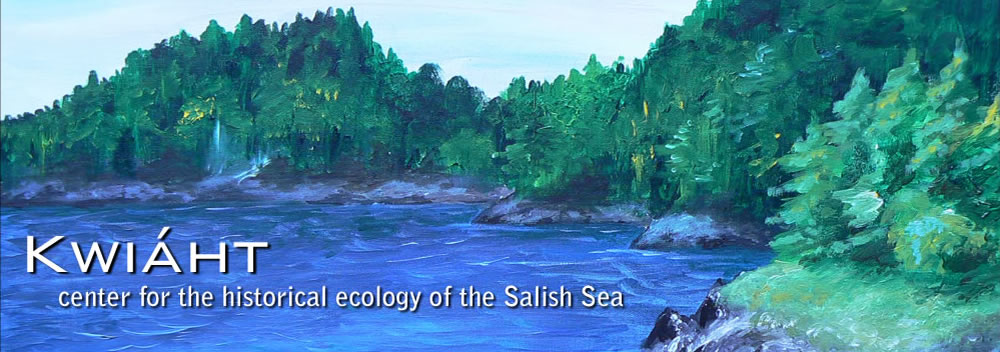Summer Internships
Kwiáht offers up to eight summer internships in analytical chemistry and genetics each year for students age 15 through college seniors. Priority is given to students with connections to the San Juan Islands, but many interns are from other states, even other countries. Interns receive need-based living stipends and weekly hands-on training with Kwiáht associates at our analytical chemistry facility in Friday Harbor, or our genetics laboratory on Lopez, and contribute to a major research project. Interns enjoy unlimited access to laboratory and library resources, and are encouraged to spend at least one day a week accompanying Kwiáht associates in the field working in other scientific disciplines such as marine biology or terrestrial ecology. Intern selection is based on references and personal interviews. We are also always happy to sponsor young researchers at any time of year, from one to six months, to contribute to a particular project of interest to them, with modest wages where possible. These internships are especially appropriate for high school senior papers, university students seeking specialized training, or young scientists taking time out between degree programs.
Here are a few examples of recent interns and their projects:
-
- Sam Barr (Lopez Island High School, Samish Indian Nation): PAHs in road-paving materials, leaching rates of bisphenol-a from consumer plastics
- Sophie Kan (University of Nice Sophia-Antipolis): Island Marble butterfly surveys and microsatellite genetics of the Euchloe genus
- Tasha Wilson (Lopez Island, Whitman College): distribution of detergents and pyrethroid pesticides in the San Juan Islands’ freshwater habitats
- Elli Blaine (Orcas Island, Wellesley College): toxic loading of freshwater fish in the False Bay watershed
- Samantha Palace (Clark University, Worcester, MA): identifying genetically distinct populations of Coastal Cutthroat trout in the islands’ streams
- Steffan Iverson (San Juan Island, The Evergreen State College): rebuilding an LC mass spectrometer***
- Will Jacobson (New York City, Carleton College in Northfield, MN): insect diversity in disturbed island wetlands
- Katherine Tidwell and Claire O’Neill (Orcas Island High School) designed special traps to collect larval invertebrates including traps using color lights
- Brook Brouwer (Lopez Island, Colorado College) conducted experiments on Waldron Island on the biogeochemistry of Native burning of camas meadows
- Grey Crowell (Waldron, Reed College) built fine-scale LIDAR models of the Fisherman Bay watershed in between her architecture studies in Los Angeles
- Sarah Clark (Friday Harbor High School) worked as a lab assistant for testing the bioremedial efficacy of the Spring Street Rain Gardens in Friday Harbor
